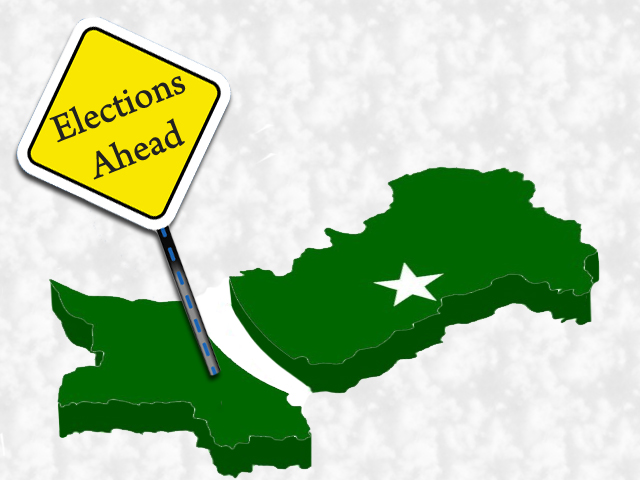
It is the first time that a civilian government has completed a full term and handed over power through the ballot box in Pakistan's 66-year history.
Here are some key facts about the election:
Candidates
There are 4,670 candidates standing for 272 seats in a first-past-the-post system in the 342-member lower house.
Sixty seats reserved for women and 10 for non-Muslim minorities are distributed by proportional representation based on the parties' share of the directly elected seats.
A total of 10,955 candidates are running in elections for the four provincial assemblies – Punjab, Sindh, Khyber Pakhtunkhwa and Balochistan.
Only 161 women are standing for the national assembly, 3.5 perc ent of the candidates.
Voters
There are 86.2 million registered voters – 37.6 million women and 48.6 million men.
Polling stations
The Election Commission has set up around 70,000 polling stations, 40 per cent of them for women, to be staffed by more than 600,000 people.
Voters must present their ID cards and their fingers are inked after voting.
Hours of voting
Polls will open at 8:00am and are scheduled to close at 5:00pm.
Elections have been postponed in three constituencies – two for provincial assembly seats and one for a national assembly seat – after candidates were assassinated during the campaign.
Security
More than 600,000 security personnel, including 50,000 soldiers, will be deployed during the election to guard against Taliban attacks that have killed more than 100 people during the campaign.
Tribal areas
Pakistan's seven semi-autonomous federally administered tribal areas elect 12 members to the national assembly.
This year is the first time that political parties have been able to contest the election in the area, a Taliban and Al-Qaeda hotbed on the Afghan border.
Post-election steps
Ballots will be counted by hand at individual polling stations. They will be forwarded to provincial election commission offices and then tallied in Islamabad.
First results are expected from 10:00pm.
The election commission will certify final results within a week.
A majority of 172 out of 272 directly elected seats is required to form a government.
Observers
Tens of thousands of local and international observers, along with representatives of the candidates and media, are to monitor polling. The main Pakistan observer organisation is the Free and Fair Election Network, which aims to field 43,500 observers.
COMMENTS (8)
Comments are moderated and generally will be posted if they are on-topic and not abusive.
For more information, please see our Comments FAQ
1719660634-1/BeFunky-collage-nicole-(1)1719660634-1-405x300.webp)

1732276540-0/kim-(10)1732276540-0-165x106.webp)

1732274008-0/Ariana-Grande-and-Kristin-Chenoweth-(1)1732274008-0-165x106.webp)
1724249382-0/Untitled-(640-x-480-px)1724249382-0-270x192.webp)


1732270499-0/Express-Tribune-(7)1732270499-0-270x192.webp)
1732267715-0/BeFunk_§_]__-(32)1732267715-0.jpg)







gas pipe line agreement with Iran despite of American opposition It mean PPP deserve one more chance,
PTI, is better than all,because it is new with sincer leadership. With good slogan New Pakistan,It is not old and tested not consistiong on corrupte politicians.
I was highly embarrassed having seen considerable rush of the local people in the PPP meeting I had put some questions to the participents heard speeker who was saying,'' we have served people now will serve the same manner Inshalla.
It is an admitted fact,people and political patries and factions have their reservations regarding the free,fair and impartiality of the election.
This is the Most correct map of Pakistan.. if India shows Kashmir as its part.. why don't u say anything?? :/ @nadir:
i don't like this map of Pakistan, because it is not complete and not giving a good message so next time make it complete, otherwise don't print it
PTI 2013 IN SHA ALLAH..
total 172 are required out of 342 not what u guys wrote!